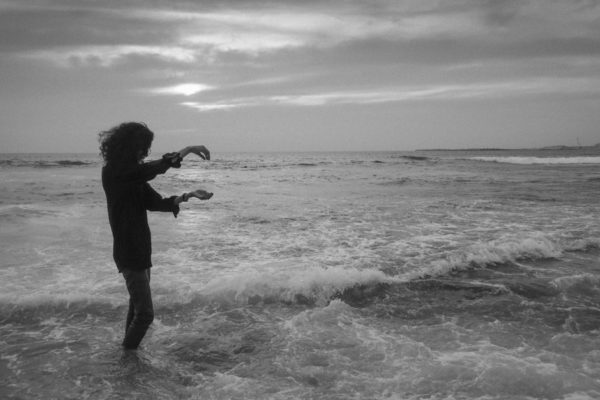Is It Possible To Exist Outside of Language? | Karachi

Vicky Shahjahan in collaboration with The Many Headed Hydra & We Are From Here, We are from here, from the Sea, 2019
** Text nur in englischer Sprache **
The Many Headed Hydra
at Is It Possible To Exist Outside of Language?
an exhibition and program curated by Aziz Sohail
at Indus Valley School of Art and Architecture Gallery, Karachi
with the support of Goethe-Institut Pakistan.
The Ministry of Utmost Happiness by Arundhati Roy opens with the protagonist Anjum, a hijra who has set up her own community in a graveyard in Delhi as a mode of survival and resistance from the broader conformist and violent society. When Anjum is born as an intersex infant, her mother interrogates the binary gendered Urdu language as a means to name and define her child, wondering ‘is it possible to live outside of language?’
Taking this story as a jumping off point, the exhibition and its associated programming is an investigation and reflection of both the limitations and possibilities of language as a means to define, explain and express diverse genders and sexualities across time and space. Featuring new commissions by artists Fiza Khatri, Lucas Odahara, The Many Headed Hydra, Omer Wasim and Vassilieia Stylianidou, the works address the complex burden and inheritance of language in our daily lives as it narrows our ability to express even while encouraging us to explore new modes of expression and writing to explain our circumstances and lives.
The exhibition is complemented by a series of public programs including readings, performances and talks by Momina Masood, Asad Alvi, Fazal Rizvi, Mehlab Jameel and Zulfikar Ali Bhutto, amongst others, as well as private workshops targeted towards emerging writers and artists. Even though a sober and timely reflection on the challenges and erasure of diverse voices in our society, this project is also a celebration of solidarity and community in order to chart new futures.
The Many Headed Hydra is a shape-shifting collective interested in myths, practices and queer ecologies that emerge from bodies of water. Involving people, critters and earthly forces of different islands, continents and peninsulas, they are interested in the potential of storytelling and fiction for connecting research, art making and publishing. A collaborative feminist and decolonial art project, the Hydra uses publication as a performative device and surfaces through unbounded magazines – in the form of rumors, printed matter, radio broadcasts, exhibitions, performances and evocations.
The The Many Headed Hydra’s contribution to Is It Possible To Exist Outside of Language? unfolds from Magazin #03 Seawater to wash the borders, salt in the wounds: Rituals for dis-identification (zine, ritual cards, murals, sculptures by Emma Wolf-Haugh, Katusa Medusa, Sandev Handy, Suza Husse, Vicky Shajahan & A Collective for Feminist Conversation) created on the occasion of Sea Change, Colomboscope 2019, curated by Natasha Ginwala. In this most recent and still ongoing surfacing of The Many Headed Hydra in Colombo, a group of artists, writers and activists entered into dialogue to engage with collectivities (natural/mythological/trans-matter) that incorporate gender dissidence as well as resistance against extractivism on ecological and social dimensions.
The installation in Karachi brings together works which have been created from 2017 through 2019 in Colombo/ Sri Lanka and on the Curonian Spit peninsula/Lithuania, a seabound borderscape present through the historical work of V. Šonta. Set against the backdrop of Karachi and the sea, these works take on new resonance where Seaview, once a commons with possibilities of fluid encounters, is now under increased surveillance and erasure.
During the exhibition, the collective will work with local practitioners for future artistic productions to continue this dialogue forward.
